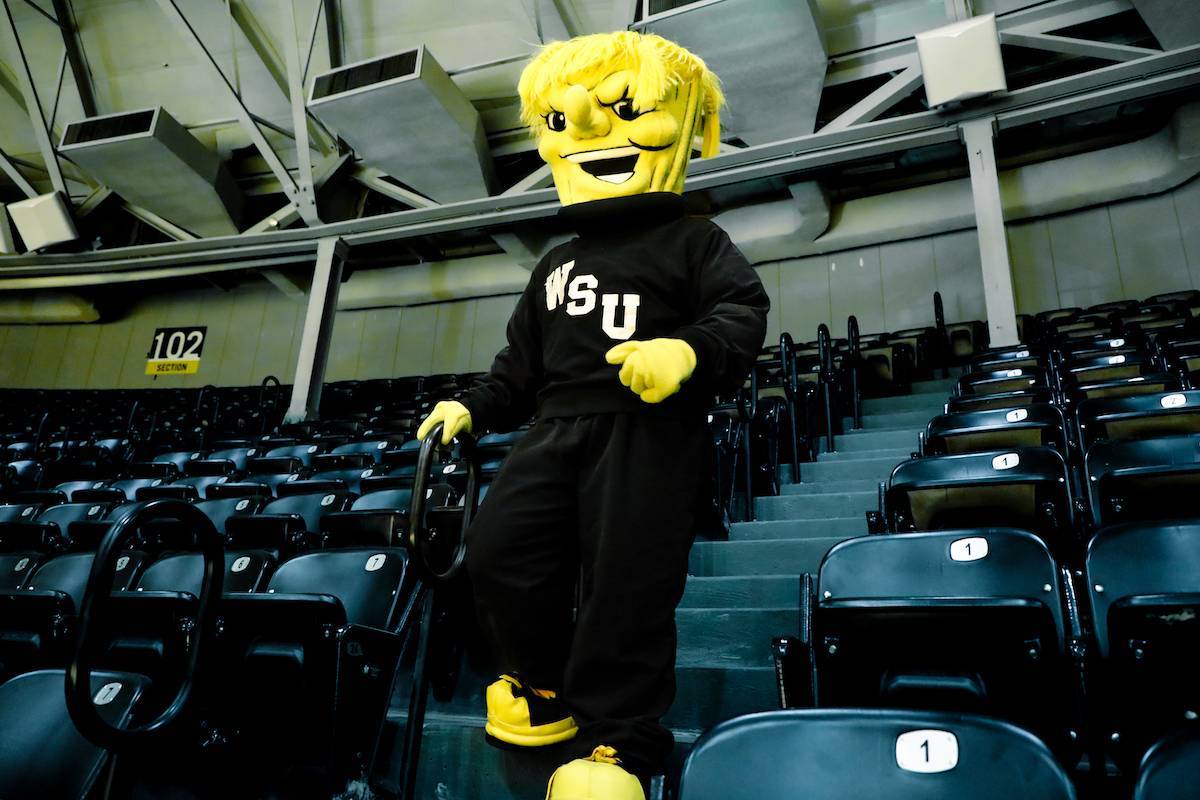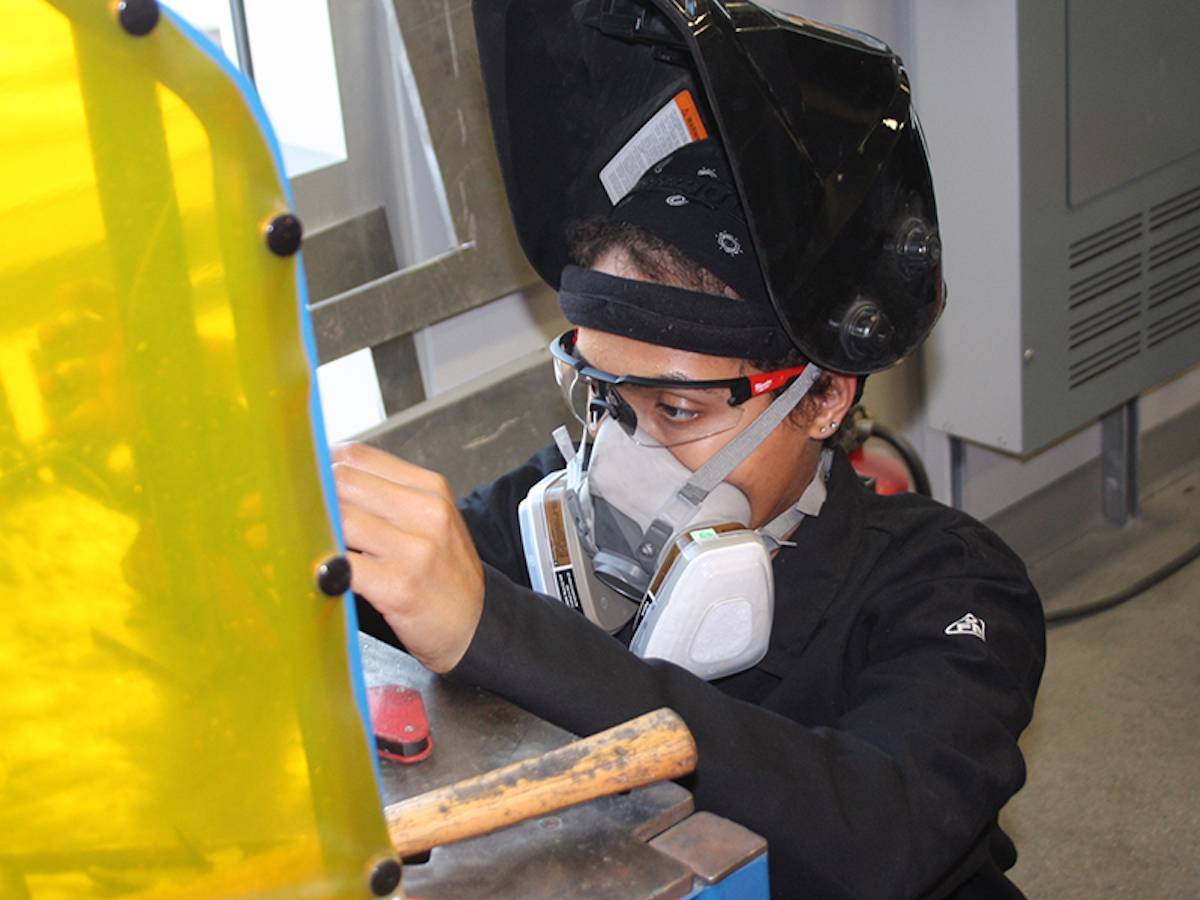Thatcher Luginbill-Ruder will see his work in the lab pay off for fans every time the Shockers play in Charles Koch Arena.
Two of those fans are special to Luginbill-Ruder, a senior industrial engineering major from Olathe. Grandparents Errol and Suzanne Luginbill are Wichita State University alums and loyal fans of the Shockers.
“They go see every single basketball game,” Luginbill-Ruder said.
When the Luginbills attend games in Koch Arena, the walk to their seats will be safer and easier, thanks to a collaboration between Shocker Athletics, the College of Engineering’s Innovation Hub and the Office of Technology Transfer and Commercialization. Around 400 handrails are being installed in aisles above the entryways in the upper bowl and in the lower bowl behind the baselines.
“They’re excited,” said Luginbill-Ruder, student manager for the Innovation Hub. “I’ve shown them photos since we’ve been doing things. They love how this will be there.”
The handrails, 36 inches tall, made of carbon steel and painted black, are designed and manufactured by Wichita State students and staff in the Project Innovation Hub in the College of Engineering. The 11 students designing and building the handrails inside the John Bardo Center on the Innovation Campus produce 12-16 rails a day.
"We decided this project would provide a great experience for students to learn about the process of making handrails, as well as a great opportunity to gain project management experience," said Zeeshan Khan, program manager for the Office of Technology Transfer and Commercialization. “Communication has been key between our departments to ensure that we have quality handrails and stay on schedule to complete this project before the start of the basketball season.”
Prototyping started in late June. Installation began in early August and is scheduled to be finished in October.
The involvement of students in every aspect makes the project a special type of applied learning, and the fact that their work is on display in one of campus’ most prominent buildings just adds to the enthusiasm.
“The really cool thing is that this has been almost entirely driven by students,” Luginbill-Ruder said. “That’s something our lab prides itself on. We pretty much designed the whole production line.”
Brad Pittman, senior associate athletic director for facilities and operations, said the athletic department began working on the project more than a year ago. Because of the width of the aisles – approximately four feet – adding handrails required a building code variance from the state of Kansas. Once the variance was granted, Pittman approached the Tech Transfer and Commercialization team for a design and to plan the logistics for the project.
“It’s an addition to the arena that will make getting up and down stairs easier,” Pittman said. “Producing them on campus is a win-win for everybody.”
The students took charge of much of the prototyping, design and manufacturing.
“They’re owning the whole process,” said Nathan Smith, applied learning facilities manager in the College of Engineering. “They started from, ‘Here is a picture of what we want it to look like.’”
The first prototype required several bends to the steel tube with eight weld points. The tight radius required to make the handrails as compact as possible added to the challenge. The students simulated the design on computers to reduce the bending and the number of weld points.
“We tried probably 15 to 18 different designs,” Smith said. “The initial prototype had eight welds and we wanted to go down to three and everybody said, ‘I don’t see how that would be possible.’ They were wrong.”
They went through almost 50 tests to perfect the alignment of the tube bending process. This prototype testing meant less waste material by reducing the overall number of parts needed to produce the completed unit.
Fans asked about handrails for the upper rows of Charles Koch Arena, opened in 1955, over the years. They reiterated that request in recent surveys.
“We’re listening to our fans,” said Scott Barnhart, senior associate athletic director for external operations. “This was a result of all the feedback we’ve gotten from sessions last summer with our fans and the fan survey we did at the end of basketball season. That was the feedback – ‘We would love to have some handrails.’”
 Brian Barnes
Brian Barnes

 Paul Suellentrop
Paul Suellentrop